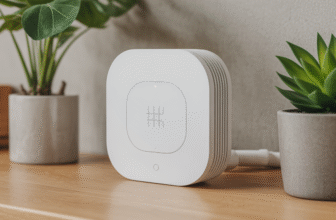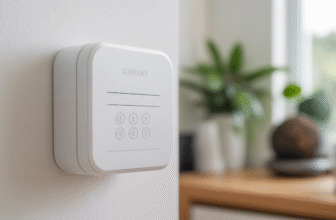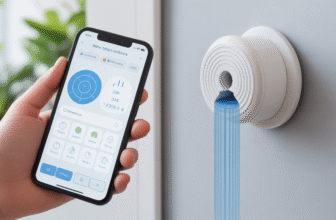
IoT Smart Lighting Systems for Rental Properties: Architectures,Benefits & Challenges
In the rapidly evolving landscape of smart home technology,Internet of Things (iot) smart lighting systems stand out as transformative enablers,particularly within rental properties. These systems offer rental property owners, tenants, developers, and investors a compelling case for enhancing energy efficiency, convenience, security, and tenant satisfaction – layers critical to competitive rental markets. This article delivers an expert, deep-dive analysis on how are architected, deployed, integrated, and monetized – with a sharp focus on technical, operational, and strategic imperatives.
Understanding IoT Smart Lighting Systems within Rental Property Ecosystems
Defining Smart Lighting in the iot Context
IoT smart lighting systems connect lighting fixtures to the internet via wireless protocols such as Wi-Fi, Zigbee, Z-Wave, or Thread. these systems enable remote control, automation, energy monitoring, and adaptive lighting scenes.
Unique Requirements for Rental Properties
Rental properties require solutions that are non-invasive yet robust, enabling landlords to optimize operational costs and enhance tenant experience without compromising on privacy, security, or ease of variability between tenants. Modular installation and vendor-agnostic control platforms are frequently enough vital prerequisites.
Key Components of an IoT Smart Lighting Setup
- Smart bulbs and fixtures: Lamp units with embedded wireless modules or retrofitted controllers.
- Gateways and hubs: centralized or distributed IoT hubs facilitating interoperability and edge processing.
- Cloud platforms and APIs: Backend infrastructure powering analytics, remote configuration, and user interfaces.
- User interfaces: Mobile apps,voice assistants,or web dashboards for real-time control and monitoring.
The synergy between IoT connectivity and cloud computing drives predictive intelligence, transforming traditional lighting into an adaptive, efficient asset.
Architectural Patterns for IoT Smart Lighting in Multi-Tenant Rentals
Centralized vs Distributed Control
Centralized architectures rely on one or more hubs managing all lighting endpoints, simplifying maintenance but posing a single point of failure. Distributed models delegate autonomy to smart bulbs or localized controllers, improving resilience and scalability.
Communication Protocols and Topologies
Zigbee and Z-Wave provide mesh networking critical for large properties with complex layouts. wi-Fi enables higher bandwidth but has range and interference constraints,while Thread is emerging as a promising IPv6-based mesh protocol merging IoT and IP worlds.
Cloud-Edge Hybrid architectures
Modern systems balance on-device intelligence (schedules, occupancy sensing) with cloud analytics (energy usage trends, anomaly detection).This balance delivers low latency while enabling remote management and integration with third-party smart building platforms.
Explore the Amazon Alexa Smart home Lighting API for engineering patterns widely adopted in smart lighting interoperability.
Energy Efficiency and Sustainability Benefits in Rental Properties
Impact of IoT-Enabled Adaptive Lighting
Occupancy sensing combined with intelligent dimming reduces wasted electricity substantially, often yielding energy savings from 20% to 60% compared to legacy lighting. Tenants benefit from personalized ambience while landlords achieve lower utility costs.
Data-Driven Energy Usage Analytics
IoT smart lighting generates precise usage data facilitating predictive maintenance and energy budgeting. Building managers can identify irregular consumption patterns or malfunctioning units promptly, driving sustainability goals.
Integration with Renewable Energy Systems
IoT lighting can synchronize with solar PV and battery storage, adjusting lighting loads dynamically based on available green power, further reducing carbon footprints in rental properties.
Tenant Experience and Remote Management Considerations
Seamless Onboarding in Diverse tenant Scenarios
Smart lighting systems for rental units must support easy tenant onboarding with minimal configuration, respecting privacy by isolation of user profiles while providing customizable controls.
Remote Access and Multi-User Controls
Landlords and property managers require secure, multi-tenant capable remote access tools to monitor lighting status and perform bulk updates or troubleshoot while tenants retain individual autonomy for their units.
Voice and App-Based Control Options
Compatibility with voice assistants (Amazon Alexa, Google Assistant, Apple HomeKit) and intuitive mobile applications enhances tenant satisfaction and accessibility, critical in competitive rental markets.
Security and Privacy Imperatives in IoT Lighting for Rentals
Risks of Networked Lighting Systems
IoT lighting endpoints often introduce vulnerabilities-unauthorized access coudl expose tenant occupancy patterns or provide entry points to a building’s network. Security must be baked into hardware and software.
Implementing Zero Trust Architectures
Employing micro-segmentation,end-to-end encryption,and periodic firmware updates ensures robustness. Segregated VLANs for IoT devices protect critical network assets from lateral attacks.
Privacy Compliance and Tenant Data Safeguards
tenant control data and usage statistics must be anonymized and stored per GDPR,CCPA,or othre relevant privacy frameworks. Transparent user consent and opt-in policies are essential.
The synergy between IoT device security and cloud platform compliance frameworks drives predictive intelligence without compromising tenant privacy.
Connectivity Challenges and Scalability in Multi-Unit Dwellings
Dealing with RF Interference and Dense Environments
In apartment complexes or large rental buildings, interference from neighboring devices demands robust channel management and mesh self-healing network protocols.
Capacity Planning for Network Traffic
High device counts require bandwidth management and priority traffic shaping, particularly for latency-sensitive lighting commands that affect user comfort.
Firmware Over-The-Air (OTA) Updates
Scalable, secure OTA mechanisms must minimize downtime and ensure all endpoints remain up to date with patches, crucial to maintaining security in rental properties.
Standardization and interoperability Frameworks in Smart Lighting
Open Protocols and Industry Alliances
Standards like Zigbee Light Link, Matter, and Thread Group drive device compatibility and ecosystem maturity.
CLI and API Control Models
Developers benefit from vendor SDKs exposing RESTful and MQTT APIs for lighting control and telemetry, enabling custom integrations with Property Management Systems (PMS) or Building Automation Systems (BAS).
Cross-Platform UI Consistency
ensuring tenants and operators have consistent control experiences across apps and OS ecosystems improves adoption and reduces support overhead.
Monetization and Return on investment for Landlords
Energy Savings as Cost Reductions
Reduced consumption directly lowers utility bills, with many cases showing payback periods below two years depending on initial installation scale.
Premium Tenant Experience Leading to Higher Occupancy Rates
Smart rental units command higher rents and retention rates due to enhanced convenience and modernity,giving landlords a competitive advantage.
Device-as-a-Service Models for CapEx Minimization
Some vendors offer subscription-based smart lighting packages,offloading upfront costs and maintenance burdens,attractive for rental property owners focused on cash flow.
Installation best Practices for IoT Lighting in Rental Properties
Non-Disruptive retrofitting Techniques
Where tenant occupancy remains, retrofit solutions use smart bulbs with native wireless control or smart switches that do not require rewiring, ensuring minimal downtime.
Wiring and Hardware Considerations for New Builds
In newly constructed rental properties, integrating PoE (Power over Ethernet) or centralized low-voltage lighting controllers enables higher control granularity and future-proofing.
Testing and Validation Checklists
- Network coverage and device connectivity across all units
- Failover behavior for power or network outages
- Compatibility with tenant smart home ecosystems
Emerging Technologies Shaping IoT Lighting for Rentals
AI-Driven Lighting Automation and Occupancy Prediction
Machine learning models analyze tenant patterns and external data (e.g., weather, daylight) to optimize lighting schedules automatically, reducing human intervention.
5G and LPWAN Integration
Emerging wireless standards such as 5G NR and Low-Power Wide-Area Networks (LPWAN) enable scalable, low-latency deployment in dense urban properties with improved mobility.
edge Computing for Instantaneous Local Decisions
Edge devices process sensor inputs locally to trigger lighting changes instantly without cloud roundtrips, critical for latency-sensitive scenarios such as security lighting.
Regulatory Landscape and Compliance Challenges
Building Codes and Energy Compliance
Rental properties must meet local codes such as ASHRAE 90.1 or the EU’s Energy Performance of buildings Directive, which increasingly require smart lighting capabilities.
Health and Safety Standards
Ensuring flicker-free, glare-reduced lighting that complies with occupant wellbeing standards is mandatory to avoid tenant complaints and liability.
Data Protection and Tenant Consent
Data collected by smart lighting (presence, usage habits) falls under privacy laws. Clear disclosure and consent mechanisms must be implemented aligned with local regulations.
Investment Perspectives and Market Growth for Smart Lighting in Rental Properties
Market Size and Adoption Trends
The global smart lighting market is expected to grow at CAGR ~20% through 2030, fueled by demand in commercial and multi-family residential rentals specifically. IoT-enabled solutions dominate new install growth versus traditional lighting.
Key Players and Innovation Drivers
Leading companies include Philips Hue (Signify), LIFX, Caséta by Lutron and emerging startups like Wiz (a sign of vibrant TCP/IP based lighting ecosystems). Collaborations with telcos and utility programs accelerate deployment.
Investment Risks and opportunities
Investors must weigh hardware commoditization risks against value-added software platforms and service layers. Increasing regulatory pressure creates prospect for tech providers offering compliance-ready systems.
Developer and Engineer Toolkits for Building IoT Lighting Solutions
Popular SDKs and Advancement Frameworks
Simulation and Testbeds
Tools like Cisco Packet Tracer (for networking), and IoT simulators such as Cooja or AWS IoT Device simulator allow prototyping without large hardware investments.
Monitoring and analytics Platforms
Cloud providers offer integrated IoT management solutions: AWS IoT Core, microsoft Azure Digital Twins and Google Cloud IoT Core provide telemetry ingestion pipelines and real-time analytics suited for smart lighting deployments.
Common Pitfalls and Deployment Challenges in Rental Properties
Inadequate Network Planning
Ignoring RF interference and network capacity leads to unreliable lighting control and frustrated tenants. Early site surveys and mesh testing are essential.
Lack of Standardization and vendor Lock-in
Proprietary solutions can limit interoperability and upgrade adaptability, increasing long-term costs for landlords and tenants alike.
Ignoring Tenant Privacy and Control preferences
Failing to implement configurable access controls or ignoring tenant concerns about monitoring can lead to legal issues and reputational damage.
future Directions: Towards Fully Autonomous IoT Smart Lighting in Rentals
Predictive Maintenance and Self-Healing Networks
AI-powered diagnostics will enable early fault detection and automatic rerouting in mesh networks, minimizing downtime and service calls.
integration with Broader Smart building Ecosystems
Lighting will become one node in unified Building Management Systems controlling HVAC, access control, and security, enhancing overall operational efficiency.
User-Centric Customization Powered by AI
Advanced personalization adapting to tenant preferences, health needs (circadian rhythm lighting), and mood will redefine tenant experience.
As the IoT smart lighting sector matures,rental property stakeholders stand to benefit enormously from embracing these enabling technologies,ushering in a new era of efficient,enduring,and tenant-centric building management.





